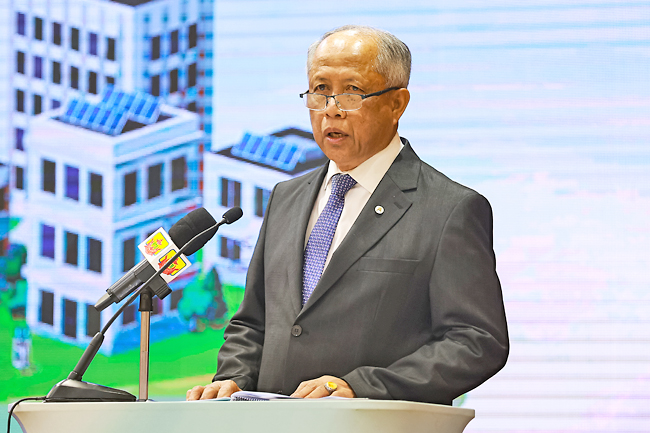The critical impact of climate change on occupational safety and health as a global and domestic issue affects a wide range of occupations. Therefore, there is an urgent need for innovative and comprehensive safety strategies to mitigate the occupational hazards of climate change.
Minister at the Prime Minister’s Office and Minister of Defence II Pehin Datu Lailaraja Major General (Rtd) Dato Paduka Seri Haji Awang Halbi bin Haji Mohd Yussof underscored the matter during the opening of the Workplace Safety and Health Conference (WSHCON) 2024 organised by the Safety, Health and Environment National Authority (SHENA) yesterday.
The minister, who also serves as the minister-in-charge of SHENA, stressed that the integration of national policy, environmental sustainability and workplace safety is essential to build a resilient and equitable future.
The minister underlined that climate variability leads to extreme weather conditions which in turn affect the natural environment and therefore clean air, food, water, shelter and security.
“It is already upon us, affecting the health and safety for the people and workers as well as natural systems. The increased temperatures, ultraviolet radiation exposure, contact with pathogens, indoor-outdoor air pollution, and extreme weather can increase existing risks and create new ones, such as heat-related disorders, vector- and water-borne diseases, allergies, accidents and losses,” Pehin Datu Lailaraja Major General (Rtd) Dato Paduka Seri Haji Awang Halbi said.
“The implications of extreme weather conditions are potentially high health costs, reduced quality of life, and productivity and economic losses.”
The minister said that climate change warrants the study of new occupational hazards, particularly the risk exposure of vulnerable occupations.
“Risk mitigation strategies should also be adapted or customised to the diversity of our working population and the hazards we face in our region,” he said.
The minister added, “While bridging the interactions of climate, occupational hazards and worker vulnerability may be a relatively new area of research, emerging risks must also be identified to improve hazard and risk prevention.
“We must take steps to observe and record diseases, injuries, accidents and occupational hazards as well as determine workers and occupations that are most at risk to allow us to produce an approach that is cross sectoral and multidisciplinary.
“As policies begin with data, there is a need to enhance our research and knowledge about climate change effects on workers towards improving working options and effective occupational safety and health response.”
Pehin Datu Lailaraja Major General (Rtd) Dato Paduka Seri Haji Awang Halbi also said the government reaffirmed its commitment to a low carbon and climate-resilient future in line with the country’s National Climate Change Policy to reduce 20 per cent of greenhouse gas emissions by 2030 and declared the country’s move towards net zero by 2050, driven mainly through energy transition and forest preservation.
“It is encouraging that we can motivate discussions towards workplace preparedness such as hazard recognition, assessment of climate-change vulnerable occupations, determining strategies to eliminate or minimise the impact of hazards as well as the importance of having emergency planning and business continuity measures in response to natural disasters,” he said.
“As we confront these challenges, we must begin with education and awareness to foster a mindset of adaptation and resilience measures to safeguard the well-being of workers. Governments and authorities, industries and the private sector, workers and employers, and civil society organisations play a crucial role and must come together to develop and implement policies that promote prevention, sustainable practices as well as training, reduce greenhouse gas emissions and prioritise the protection of workers’ fundamental rights and well-being.” – Rokiah Mahmud



